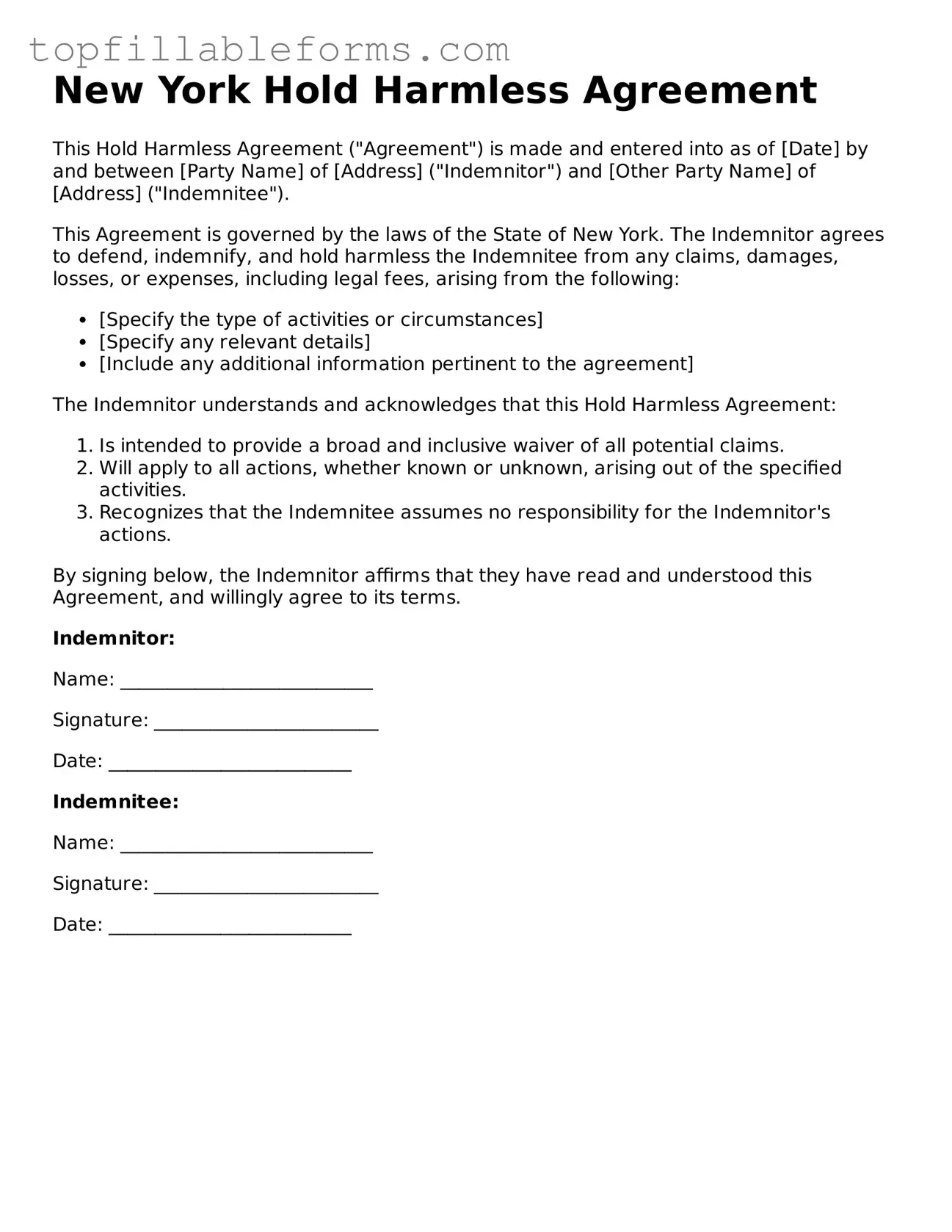New York Hold Harmless Agreement
This Hold Harmless Agreement ("Agreement") is made and entered into as of [Date] by and between [Party Name] of [Address] ("Indemnitor") and [Other Party Name] of [Address] ("Indemnitee").
This Agreement is governed by the laws of the State of New York. The Indemnitor agrees to defend, indemnify, and hold harmless the Indemnitee from any claims, damages, losses, or expenses, including legal fees, arising from the following:
- [Specify the type of activities or circumstances]
- [Specify any relevant details]
- [Include any additional information pertinent to the agreement]
The Indemnitor understands and acknowledges that this Hold Harmless Agreement:
- Is intended to provide a broad and inclusive waiver of all potential claims.
- Will apply to all actions, whether known or unknown, arising out of the specified activities.
- Recognizes that the Indemnitee assumes no responsibility for the Indemnitor's actions.
By signing below, the Indemnitor affirms that they have read and understood this Agreement, and willingly agree to its terms.
Indemnitor:
Name: ___________________________
Signature: ________________________
Date: __________________________
Indemnitee:
Name: ___________________________
Signature: ________________________
Date: __________________________
